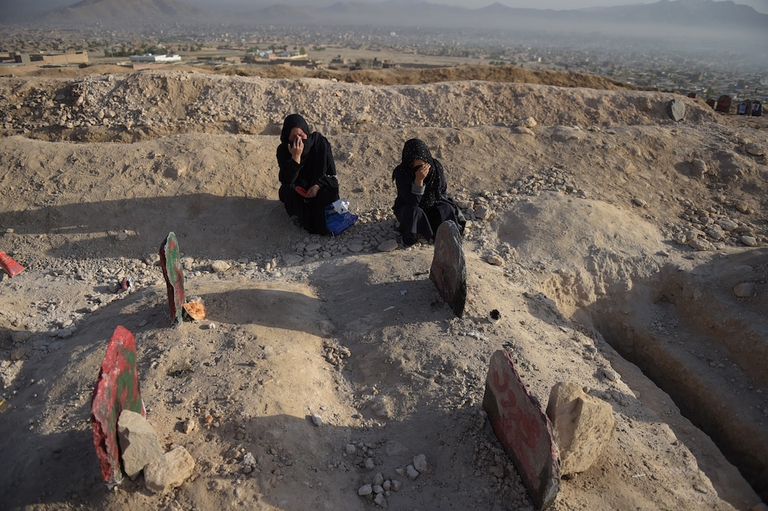
As per tradition after 12 years India held Mahakumbh, the world’s largest spiritual congregation that has been attracting pilgrims from across the globe.
Sono più di cinquemila le vittime, tra morti e feriti in Afghanistan, dall’inizio dell’anno. Le Nazioni Unite lanciano l’allarme, parlando di “cifre record”.
More than 1,600 people have been killed and 3,565 wounded over the first six months of 2016. Afghanistan keeps being a land stage to daily violence, as shown by the United Nations’ latest report. Such figures represent a “half-year record since counting began in 2009” and have increased by 4 per cent compared to the first half of 2015, for a total of 5,166 civilian casualties.
The UN has published the report only two days after the umpteenth massacre. On Saturday 23 July, two suicide attacks killed 80 people in Kabul. “People are killed while praying, working, studying, fetching water, recovering in hospitals,” said Secretary-General’s Special Representative for Afghanistan Tadamichi Yamamoto.
#Afghanistan: Civilian casualties hit half-year record, with 5,166 dead or maimed – @UN https://t.co/nNQ9WBaaaX pic.twitter.com/jsRWWeukPa
— UN News Centre (@UN_News_Centre) July 25, 2016
The organisation has also stressed that “the figures are conservative – almost certainly an underestimate”. Yet, data shows that civilian casualties recorded between 1 January 2009 and 30 June 2016 have risen to 64,000, including 23,000 deaths and 41,000 injured. 2009 marks the launch of the United Nations Assistance Mission in Afghanistan (UNAMA).
According to the UN, violence is mainly perpetrated by rebel and fundamentalist groups, in particular by the Taliban and the Islamic State. In fact, 60 per cent of civilian casualties can be ascribed to these groups. However, UMANA documented an increase in civilian casualties attributable to pro-government forces, which is 23 per cent of the total.
Data concerning children are appalling. 388 children have been killed in the first six months of this year, while 1,121 have been injured mainly due to landmines and unexploded devices.
Equally appalling is the life of Afghans told by High Commissioner for Human Rights Zeid Raad Al Hussein, quoted in the report: “The family that lost a breadwinner, forcing the children to leave school and struggle to make ends meet; the driver who lost his limbs, depriving him of his livelihood; the man who went to the bazaar to shop for his children only to return home to find them dead; the broken back and leg that has never been treated because the family cannot afford the cost of treatment; the parents who collected their son’s remains in a plastic bag… In just the past six months, there have been at least 5,166 such stories.”
Siamo anche su WhatsApp. Segui il canale ufficiale LifeGate per restare aggiornata, aggiornato sulle ultime notizie e sulle nostre attività.
![]()
Quest'opera è distribuita con Licenza Creative Commons Attribuzione - Non commerciale - Non opere derivate 4.0 Internazionale.
As per tradition after 12 years India held Mahakumbh, the world’s largest spiritual congregation that has been attracting pilgrims from across the globe.
Workers in tea gardens of West Bengal, India, that produces Ctc tea for domestic consumption complain that they have been devoid of basic facilities while political parties make hollow promises during every elections which are never fulfilled.
India is in the middle of the elections, but sadly none of the politicians have uttered a word on man-animal conflict that has been devouring several lives every year.
Manipur, a state in north-east India, is still reeling under the tremors of violence that broke out last year devouring lives and paralyzing the economy.
The government of Tanzania is currently planning to evict more than 80.000 indigenous Maasai people from their ancenstral land
A new UNU-INWEH report on the global bottled water industry reveals the massive scale of this market and the lack of strict quality controls.
Isatou Ceesay founded a social enterprise that is helping to fight plastic pollution and empowering women and young people to gain economic independence.
In 2020, Mihela Hladin made a radical decision that many, in recent times, have probably considered. This is her story, with photos by Matt Audiffret.
The Brazilian government has started evicting illegal gold miners, responsible for the health emergency that has hit the Yanomami people.









